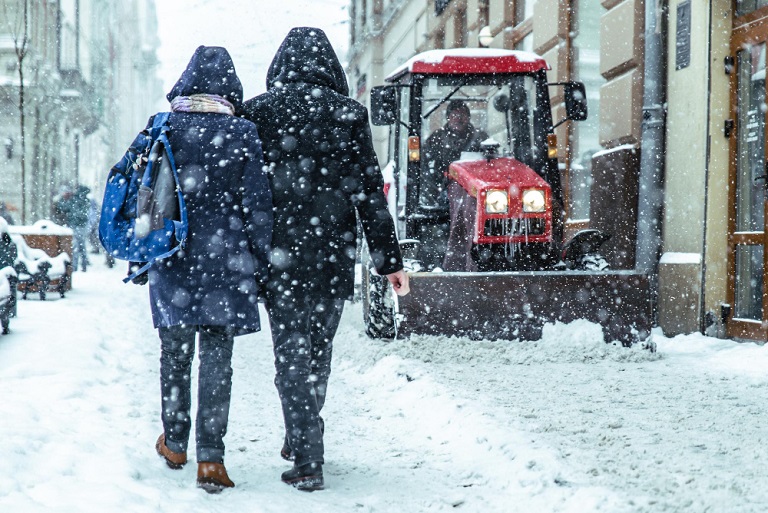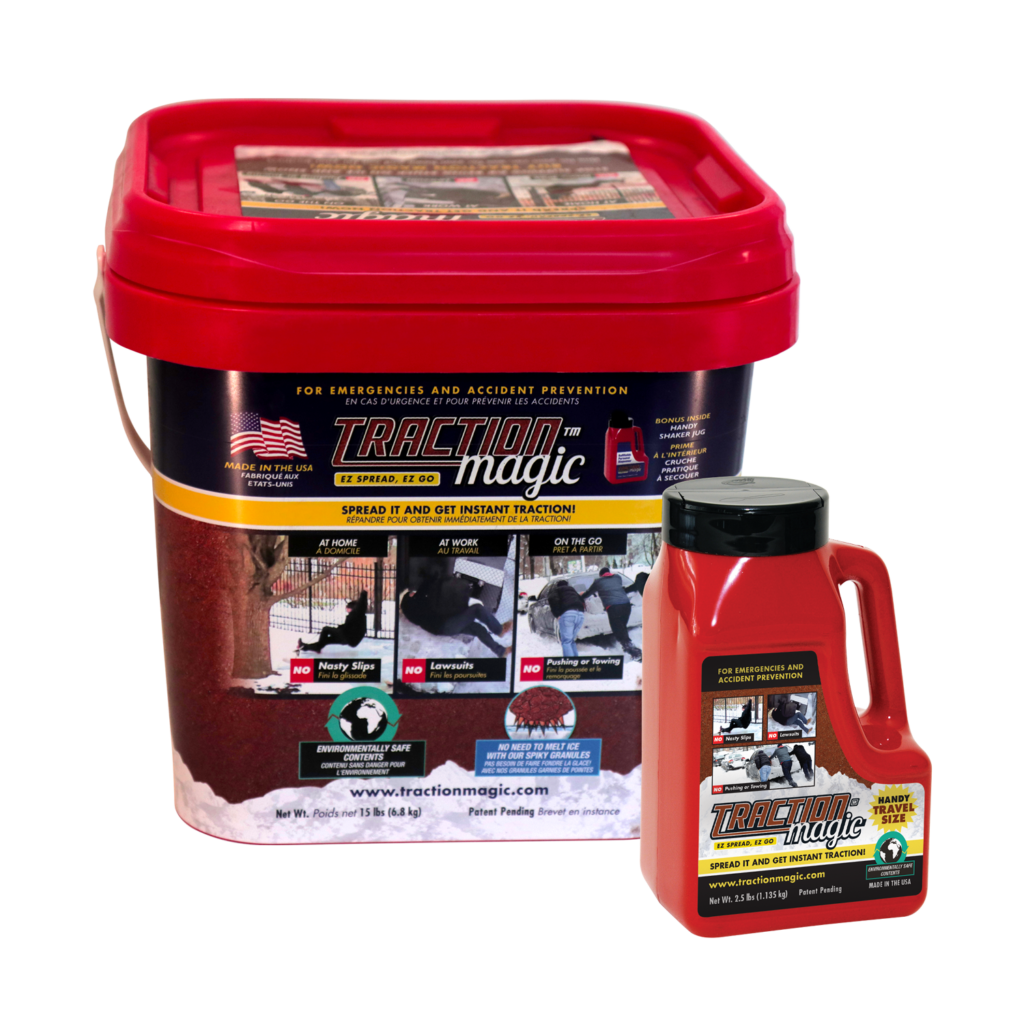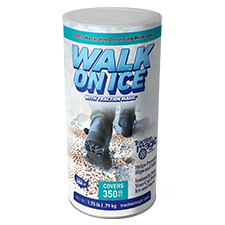Long-Lasting Frost-Proof Concrete Driveway

Just because it’s summer doesn’t mean you can’t start thinking about your winter. Chances are, if you live in a cold city, you’ll have to deal with a few months of freezing temperatures and snow on your concrete driveway. Yes, it can be a pain, but there are some simple steps you can take to ensure that your new driveway doesn’t crack or crumble apart as soon as a little bit of ice and frost hits it. And if you ever wonder, can you use ice melt on your roof? Then you will get your answer in this article.
Concrete is a versatile and commonly used construction material, but it’s not immune to the effects of frost and freezing temperatures. Frost can lead to serious damage in concrete structures, affecting both their appearance and structural integrity. In this article, we’ll delve into the world of frost-resistant concrete, its benefits, and how to protect your concrete surfaces during winter. Additionally, we’ll introduce Safe Thaw, an innovative ice melt solution that complements frost-resistant concrete while ensuring safety for people, pets, plants, and surfaces.
What Does Frozen Concrete Look Like?
Frozen concrete often appears discolored, dull, or chalky. It may have surface cracks or show signs of spalling, where small pieces of concrete break off from the surface. These visual cues can indicate that the concrete has been affected by freezing temperatures.
How Does Frost Affect Concrete?
Frost affects concrete through a process known as freeze-thaw cycling. When water within the concrete freezes, it expands and exerts pressure on the concrete matrix. Upon thawing, the ice melts, leaving voids that compromise the concrete’s strength and durability. This cycle of freezing and thawing can lead to cracking, spalling, and overall deterioration.

What Is Frost Damage in Concrete?
Frost damage in concrete refers to the deterioration caused by the repeated freeze-thaw cycles. The damage can manifest in the form of cracks, scaling, surface pitting, and loss of structural integrity.
What Is Frost Resistant Concrete?
Frost resistant concrete is specifically designed to withstand the effects of freeze-thaw cycles. It contains air-entraining agents that create microscopic air bubbles within the concrete, providing space for water to expand and contract without causing damage.
Not All Concrete is Suitable For Driveways
Concrete can crack if it is exposed to frost. Concrete expands and contracts as it freezes and thaws. This process causes the concrete joints to open up, which can lead to cracks in the surface of your driveway. Alternatively, if your driveway is too thin, there won’t be enough material around the edges to support itself under its own weight once it’s installed.
Build Up Thicker Concrete: As with any driveway, it’s important to build up your concrete so it’s thicker than normal where the frost can get to it. The best way to do this is by using a thick layer of aggregate in addition to your normal mix of cement and sand. This will ensure that your drive has a nice smooth surface while still being protected from cracking or crumbling due to frost.
Reinforce Your Concrete: If you can, reinforce your concrete. Use:
- Reinforced concrete that has rebar or steel mesh.
- Concrete that has a higher cement content
- Concrete that has a higher water content
- Concrete with more sand in it and less gravel/stone.
Don’t Allow The Water to Pool Anywhere: Firstly form and pour your concrete so that the water doesn’t pool anywhere. If there’s a low spot in your slab, fill it with some kind of material that will allow the concrete to bond well with it (like sand or cement). It also helps prevent frost damage by keeping cold air from seeping into the ground through cracks at night.
Use Insulation Materials in The Slab: As you build your concrete, use insulation materials in the slab, such as Styrofoam or cardboard tubes. Insulation can be done by building a frame and placing it over it. You can also place old clothes, blankets, and newspapers under the concrete to keep it from freezing. Old furniture and books are other options for keeping the heat in your new driveway.
Concrete Safe Ice Melt
Safe Thaw Ice Melt is a urea-based ice melt designed to be safe for kids, pets, and the planet. Using Safe Thaw is also the best way to melt ice on sidewalk or driveways.
Safe Thaw’s non-corrosive formula can be used on concrete driveways, lawns, and decking material without discoloring or damaging the surface. And to answer your question – Can you use ice melt on your roof? Yes, definitely, Safe Thaw is completely safe and effective to use on your roof also. Safe Thaw crystal leaches out a deicing liquid and speeds up the melting process even at a temperature as low as (-25) °F. In addition, ice melting crystals prevent water from reforming to destabilize and melt ice particles in 10-minutes.
100% salt & chloride-free, fast acting Ice Management Solution
Conclusion
Frost resistant concrete is a valuable investment in regions prone to freezing temperatures. By selecting the right concrete mix and utilizing solutions like Safe Thaw, you can ensure the longevity and integrity of your concrete surfaces, all while maintaining safety for everyone and everything that comes into contact with them.
We hope this article has given you some ideas about how to keep your driveway from cracking in the winter. When it comes down to it, there’s no one-size-fits-all solution for every type of concrete and every climate. Make sure you use the right kind of concrete. Concrete comes in many varieties; some are better suited for driveways than others. Make sure you choose a high-strength cement mix designed specifically for that purpose, as lower-quality cement won’t be able to withstand the stresses placed on them by car tires over time.
FAQs
Try Also Our Other Winter Safety Products:
Traction Magic
Stay safe on slippery surfaces with a product that’s 100% natural and safe for pets, people, and your property. Whether it’s sidewalks, steps, or even your car’s traction, Traction Magic is the go-to choice.

Walk On Ice
The handy disposable canister can be taken everywhere, with the same 100% naturally occurring minerals that provide instant traction on ice or snow. Use it on sidewalks, steps, or as an instant traction agent for your car.


